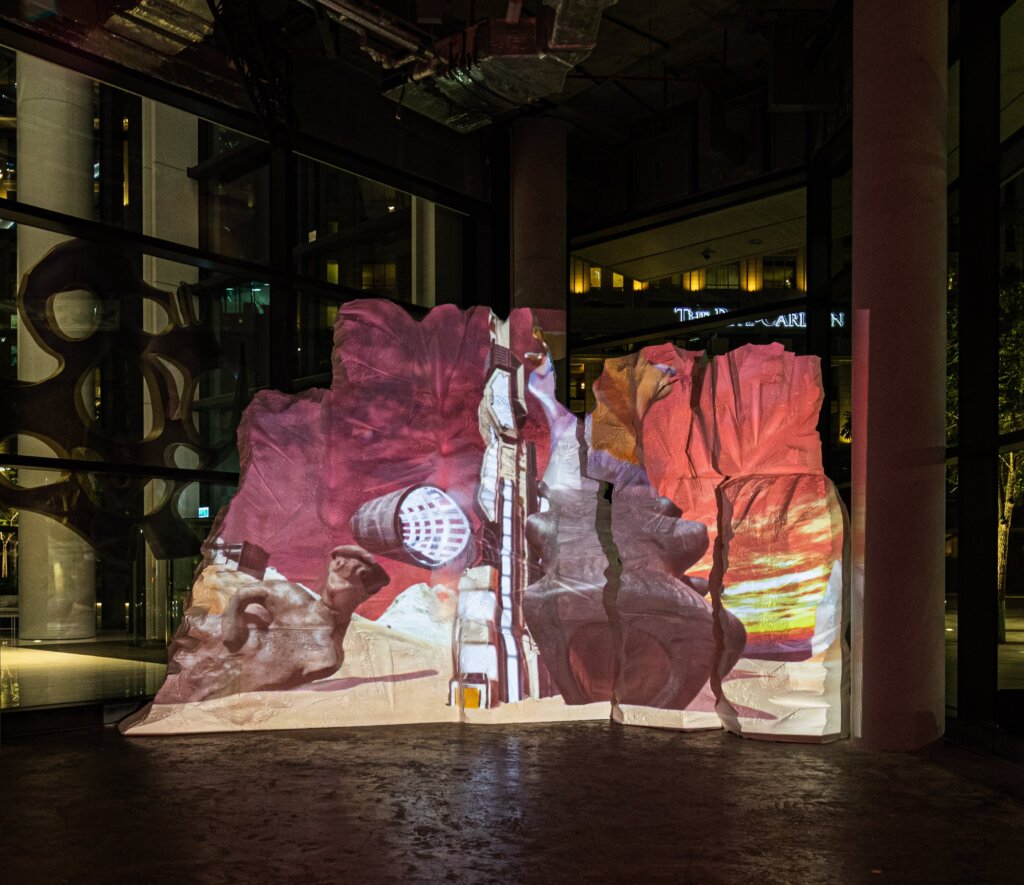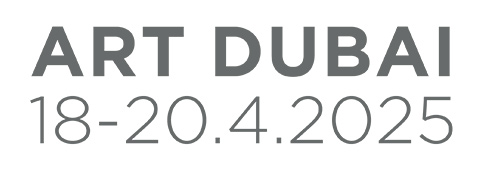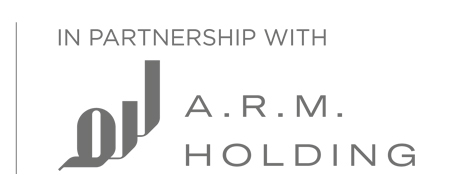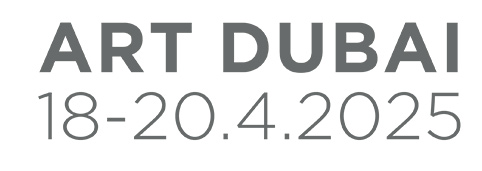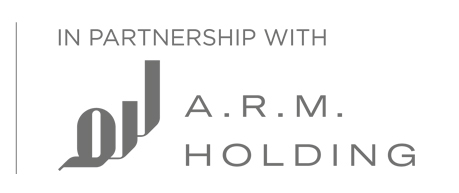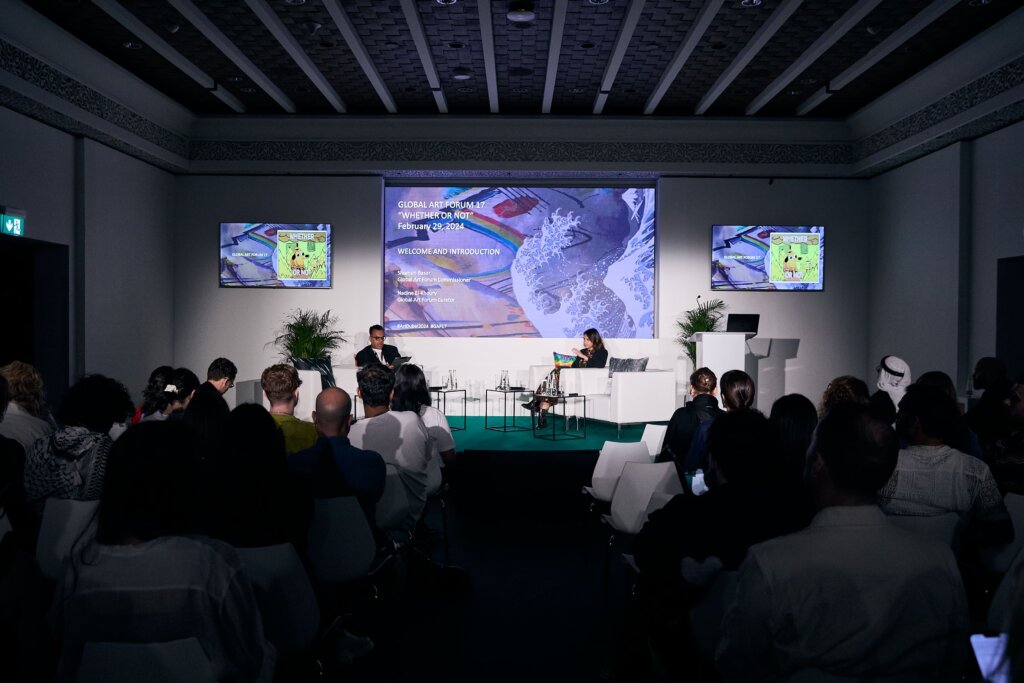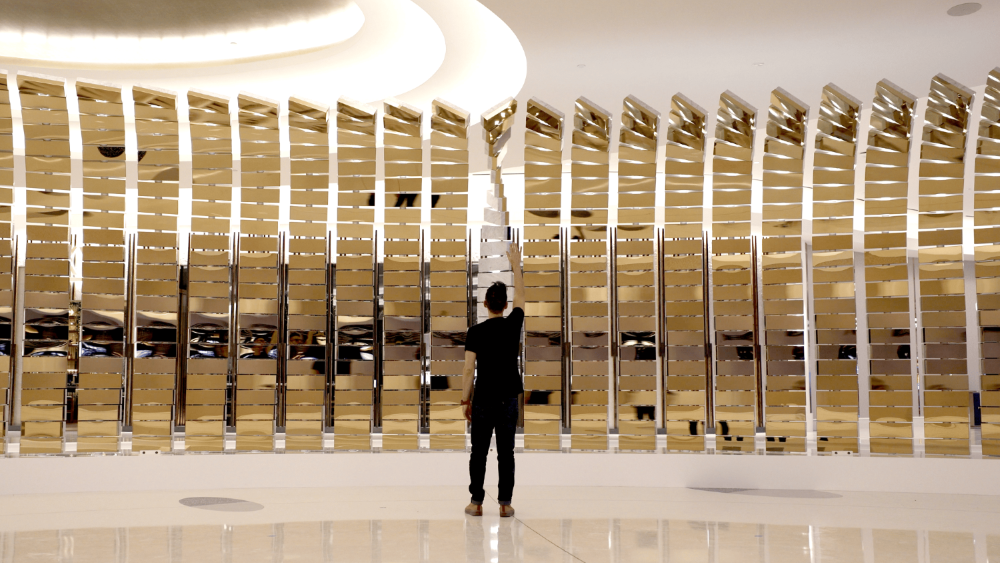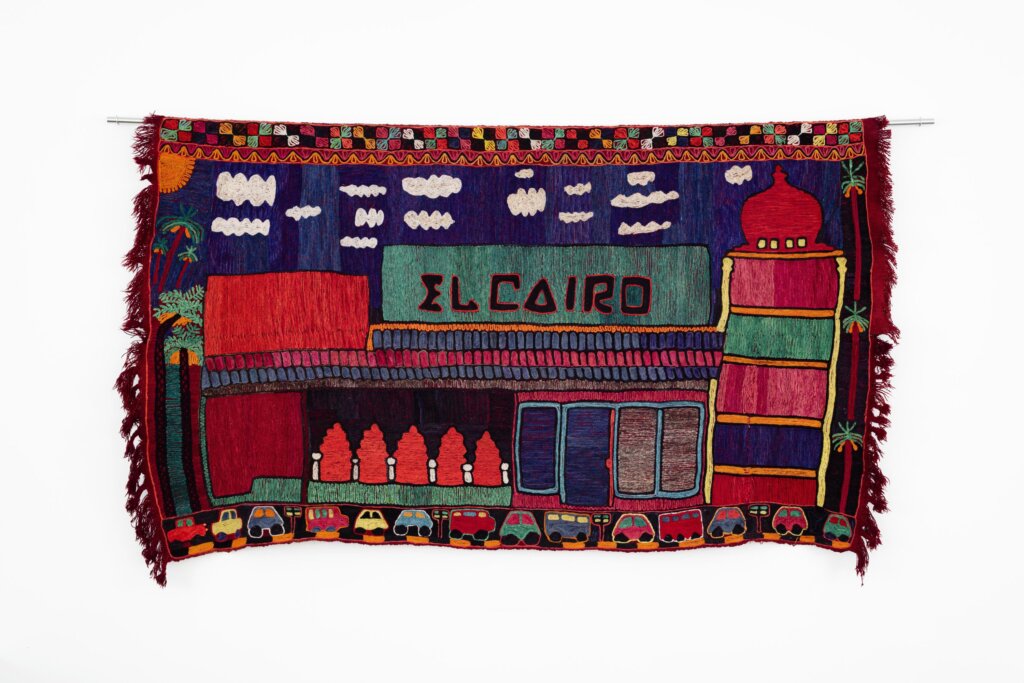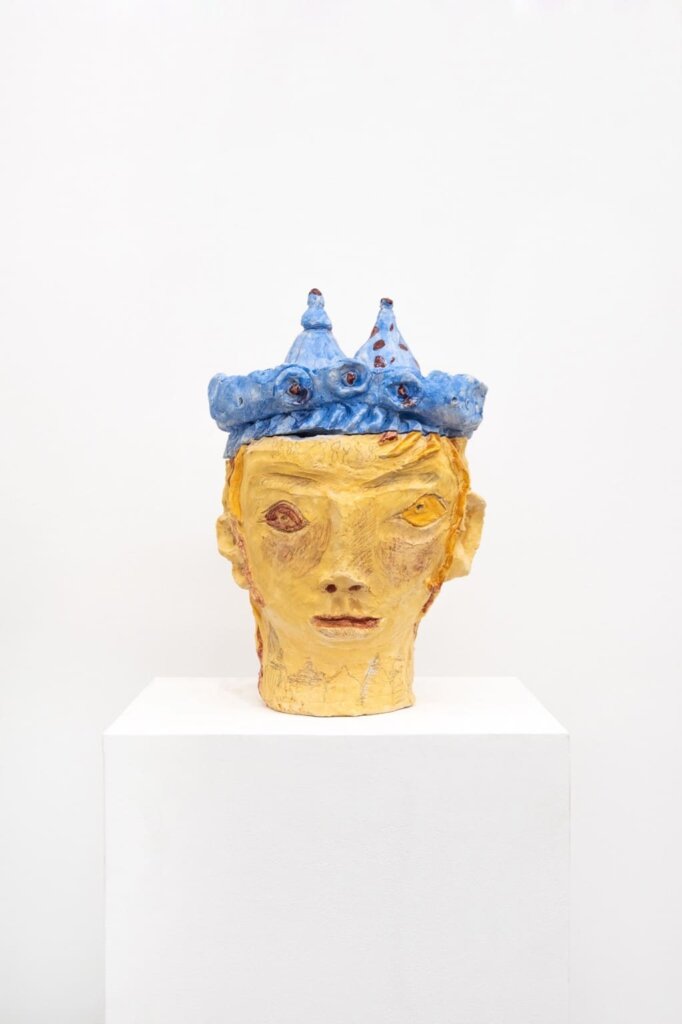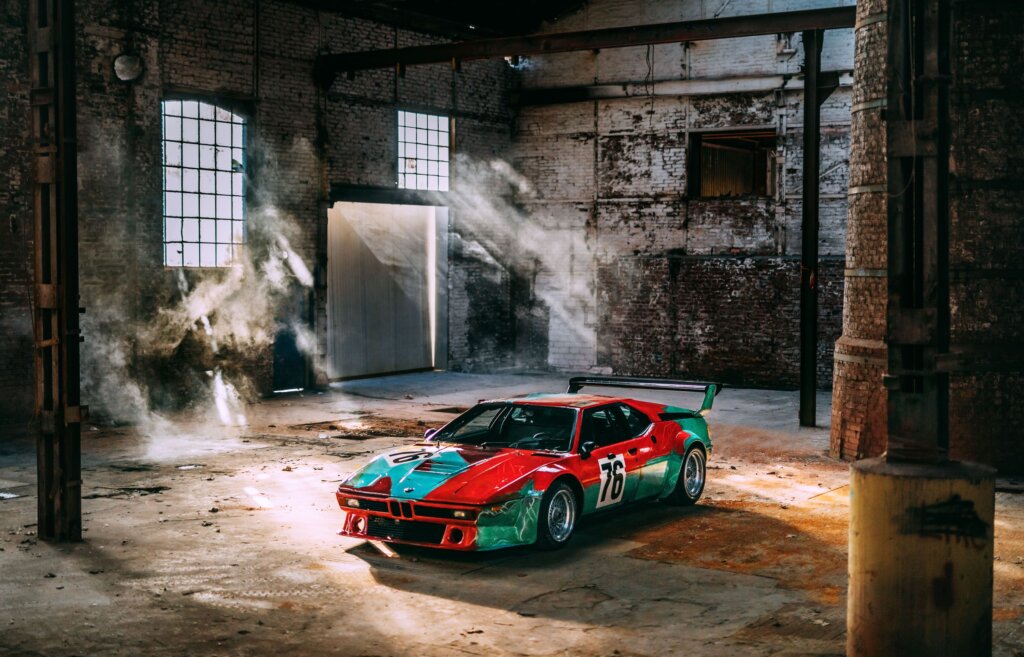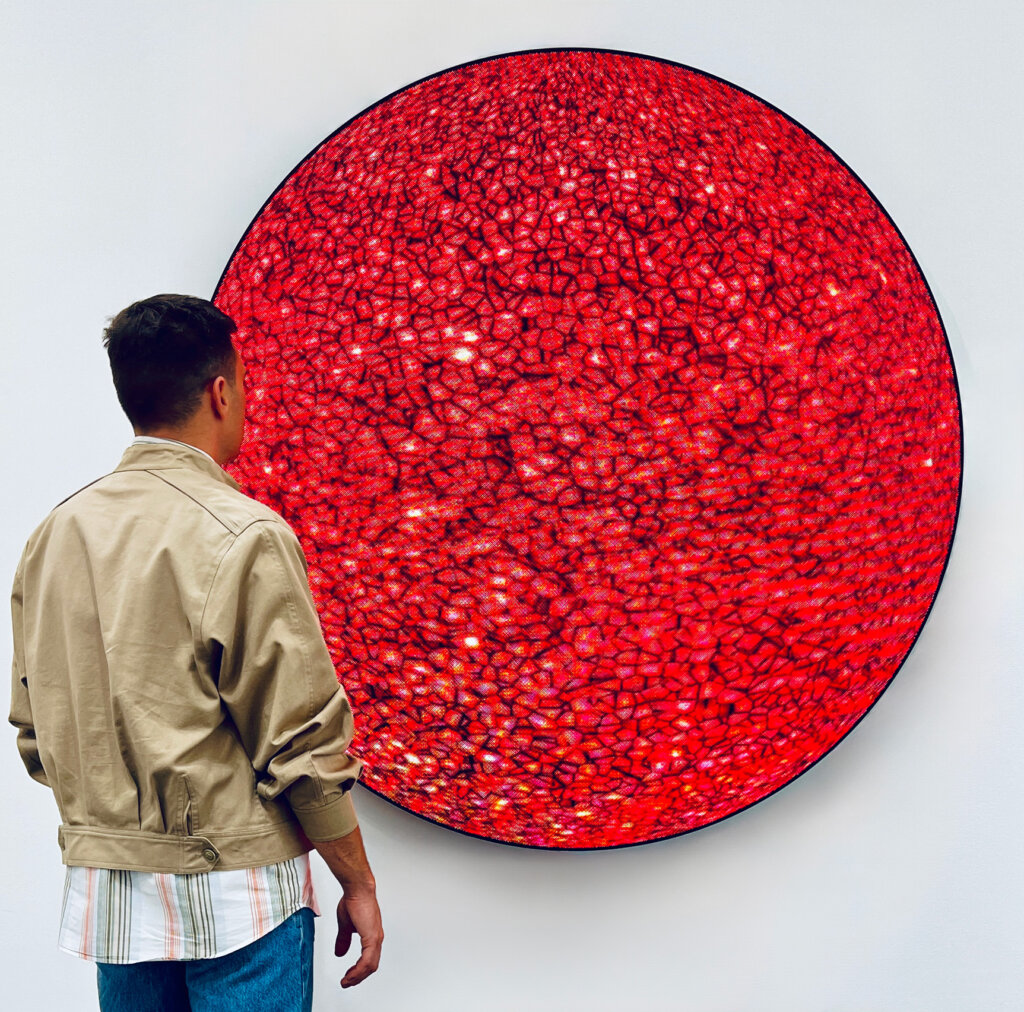
Now in its third year, the Art Dubai Digital section explores the intersection of new media art and technologies in order to expand our understanding of contemporary culture. In 2024, the section is curated by Auronda Scalera and Alfredo Cramerotti, co-directors of Multiplicity-XXnft curatorial and publishing platform as well as Web to Verse, a project aimed at encouraging exhibitions and research on the origin and evolution of digital art from the 1950s to present day.
In this interview they discuss their curatorial approach, some of the artists and works that will be on show, and the emerging themes from the selected galleries.
What inspired your curatorial framework, which you’ve titled “Expansion / Diffusion”?
Alfredo Cramerotti & Auronda Scalera: Almost one hundred years ago, Edwin Hubble, working at the Carnegie Observatories in Pasadena, California, measured the redshifts of a number of distant galaxies and discovered that the universe was in expansion. In the same spirit of research and exploration, we have measured the temperature of artistic practices around the world, spanning geographies, time zones and formats. As a result, we will present an expanded vision of what it is, may be, and will be the field of contemporary art in the years to come.
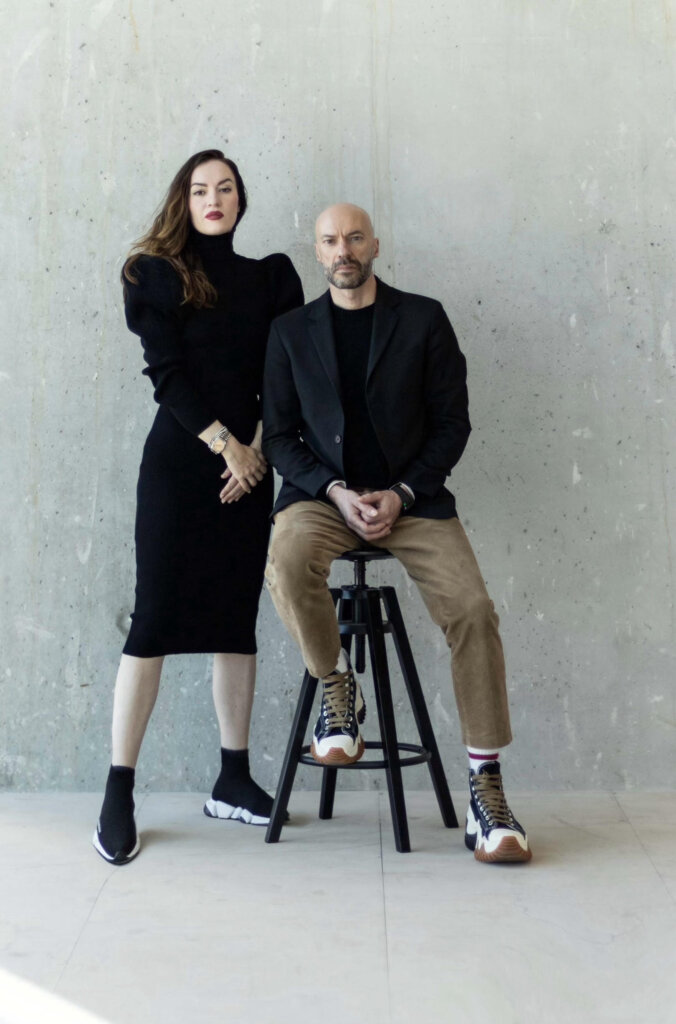
Auronda Scalera and Alfredo Cramerotti, Co-Curators of Art Dubai Digital 2024. Photo credit: Monika Cieplucha
How did you select the galleries that will be in the Art Dubai Digital section?
AC & AS: Hubble used a telescope to observe the skies and we’ve looked at digital art through what we call the field of art and advanced technologies (AxAT): that is, technical innovation through the lens of contemporary art and vice-versa. After a relentless investigation of what artists, creatives, technologists and producers of culture are up to now, Art Dubai Digital 2024 will present and, to some extent, predict the new themes, trends, names and formats in the current ecosystem being shaped by art, communication and technology.
What kinds of work will be on show?
AC & AS: The ever growing and changing realms of digital art can be difficult to grasp if one is not fully immersed in the field. Our highly curated section of artists, galleries, dealers, marketplaces, institutions and collections will navigate these frontiers through the presentation of digital video, the world of augmented reality (AR), virtual reality (VR), extended reality (XR), artificial intelligence (AI), generative art, robotic art, and immersive art experiences. Art Dubai Digital embraces the “phygital” approach of current practitioners: not only digital art but a blend of digital and physical, virtual and analogue, screen-based and spatial.
“Art Dubai Digital embraces the “phygital” approach of current practitioners: not only digital art but a blend of digital and physical, virtual and analogue, screen-based and spatial.”
Tell us more about robotic art. What can visitors expect to see?
AC & AS: In the realm of robotics, machines can transcend mere functionality to become vessels of artistic expression. Sougwen Chung and Ivona Tau, presented by Hofa Gallery and 37X respectively, pioneer the fusion of AI and robotics. Sougwen’s algorithms breathe life into digital canvases, while Ivona’s experimentation with neural networks and code transcends traditional boundaries, evoking emotions through artificially intelligent tools. And Philip Colbert, often referred to as the ‘grandson of Andy Warhol,’ will showcase, for the first time in the MENA region, the LobstarBot—a data-driven robot that will produce new, unique artwork in collaboration with the audience. It is built in collaboration with The Robotics Lab of University College London and will be presented by Erma Gallery in collaboration with AA Meta.
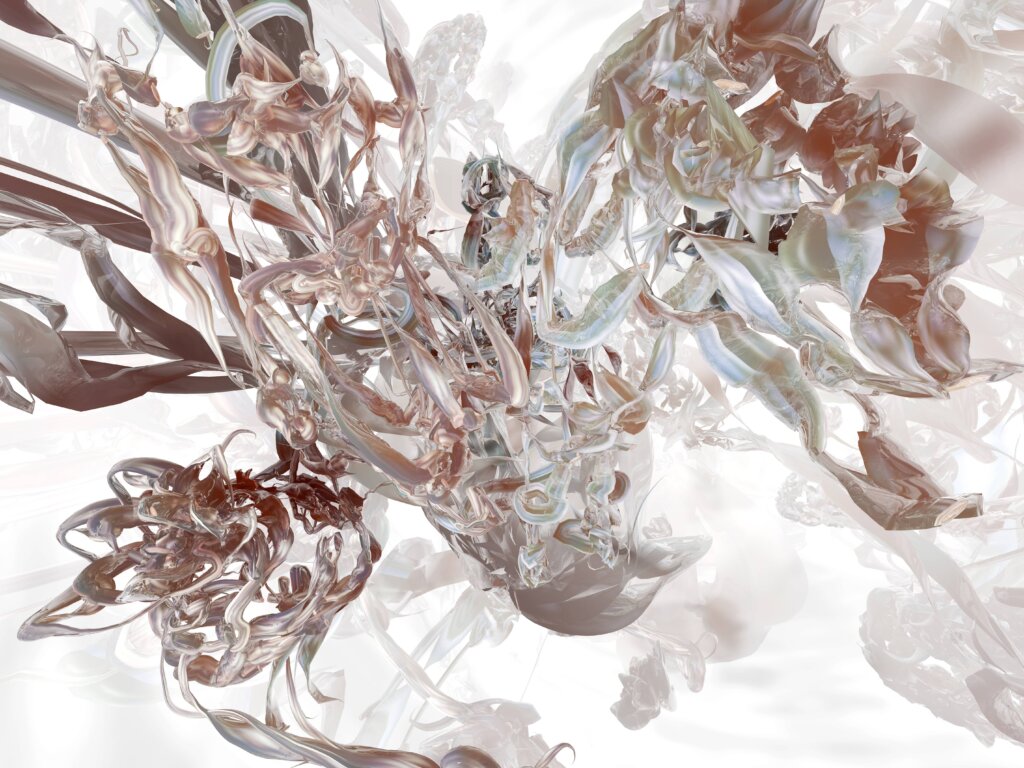
Sougwen Chung. ‘Hylomorphism VIII’. 2023. 3D VR Painting, Print on Butler Finish, Dibond Mounting. 149 x 200 cm. Courtesy of HOFA Gallery and Artist.
Immersive art, and works that include VR and AR are incredibly popular at the moment. What kinds of works will be included at the fair?
AC & AS: Hilton Contemporary will bring to Art Dubai Ouchhh, a studio that is a pioneer of data paintings and sculptures, creating works that are generated from a live-feed database centred on human functions and elements such as brainwaves and heartbeats. Leila Heller Gallery will present an immersive installation by Maxi Cohen and Art In Space will build an immersive interactive room where all five senses will be activated with works by artists such as Annibale Siconolfi and Dangiuz.
A few of the galleries are showing works that take on themes around spirituality — how does such a topic fit in with art and technology?
AC & AS: I think spirituality is actually quite close to technology’s presence in our lives. Spirituality is something that is at the centre of your being and you don’t really choose it; you feel it. You can’t see it in your mind or your body. Technology is also very pervasive — every day, every situation, technology is now embedded into, even if we don’t realise it. So there’s a similarity there. Technology is seen in many ways as an expansion of the human body and, therefore, an expansion of our lives. In this age, where technology is so immersive, I think it has a very central position. Technology is now part of a holistic understanding of what it means to be a human being. Stephan Breuer’s work at Espace Gallery blurs the lines between VR and divine consciousness, inviting viewers to explore the transcendent through immersive experiences. Shirin Abedinirad’s transformative installations at Sanji Gallery beckon us to ponder the interconnectedness of nature, technology and spirituality, while Angelo Plessas’s hypnotic screens at TAEX offer a space for meditation and introspection.
“Technology is seen in many ways as an expansion of the human body and, therefore, an expansion of our lives. Technology is now part of a holistic understanding of what it means to be a human being.”
There is a large proportion of female artists in the Art Dubai Digital section this year and references to women’s empowerment. Can you speak more about that?
AC & AS: It has been a constant thread in our work and we work hard to ensure that there is a balanced representation of women artists in our exhibitions. As in other parts of art history, there can be a tendency towards the promotion of white, Western male artists and so we actively work to bring in diversity in the digital art field. Our selection of galleries, platforms and collecting institutions such as Gazelli.io, Gallery Now, Immaterika, 1OF1; and artists from non-Western backgrounds and perspectives such as IX Shells, Genesis Kai, Vakki, and Florencia Bruck, highlight the untapped potential of female creators in reshaping the artistic landscape. There are a few galleries in Art Dubai Digital 2024 who will be showing only women artists, such as Unit London. Their presentation will include digital artists Krista Kim, Linda Dounia and Studio Meeson who are using code to capture the experiential, corporeal and internal dimensions of the human body.
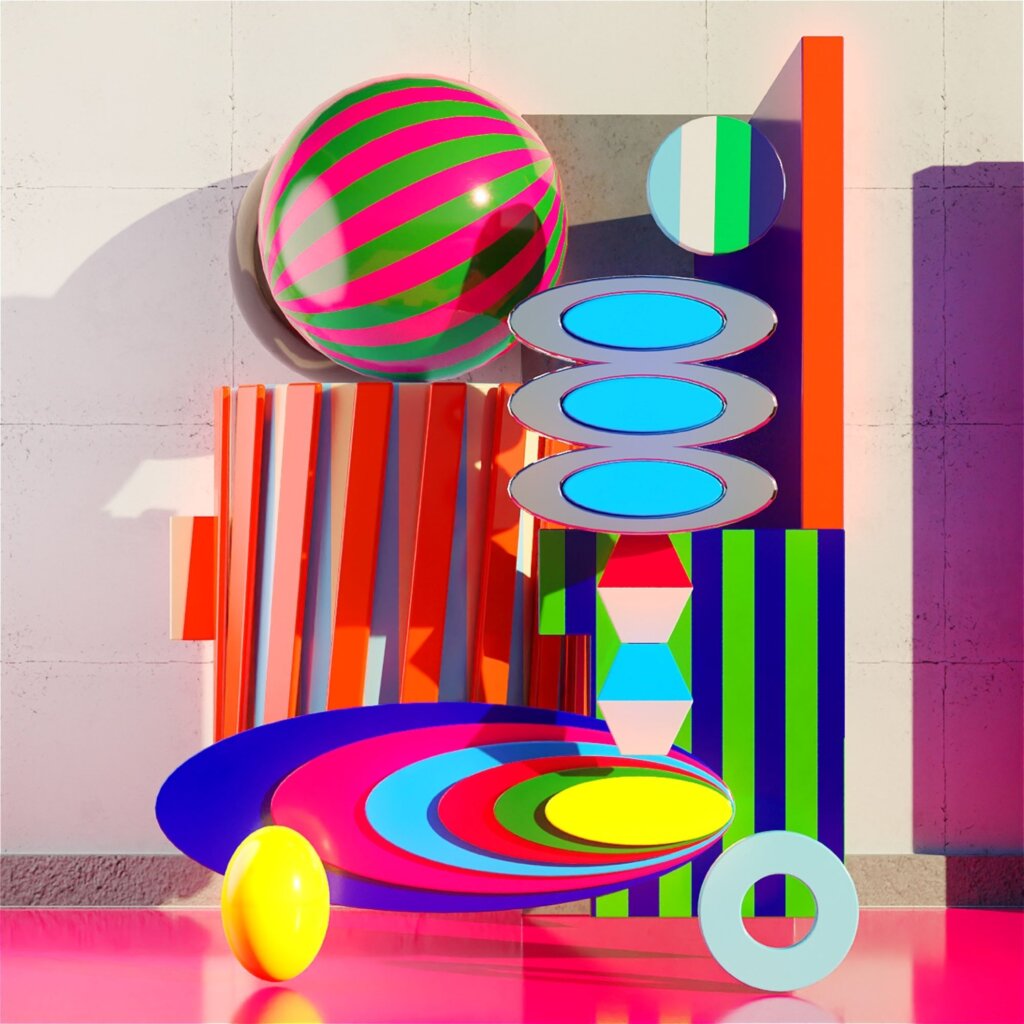
Vakki. Incomplete Shape. 2024. Digital video, 3 minutes. 50×50. Courtesy of Artist and Gallery Now Seoul.
It is ten years since the first artist first experimented with blockchain technology. How will Art Dubai Digital mark the occasion?
AC & AS: Blockchain technology revolutionises the way we create, distribute and authenticate artistic endeavours. There are ten seminal artists who first experimented with, and effectively launched the movement of blockchain-based art back in 2014. Morrow Collective will present them together for the first time as a celebration of this decade of innovation.
What are you most excited about for Art Dubai Digital 2024?
AC & AS: Art Dubai Digital represents the artists and galleries at the cutting edge of the art world and technology and we are bringing so many of these pioneers to the fair this year. Bitforms Gallery, for example, will present works by leading digital artists like Manfred Mohr, Claudia Hart and Rafael Lozano-Hemmer. Mohr works with algorithmic and generative art, and has been at the forefront of new media since the 1960s. Hart emerged as part of a generation of intermedia artists in the 1990s who were producing what was known then as “identity art”, which she later filtered and updated through the use of rapidly developing technologies. Plus, we have the honour to show for the first time some works by Fabrizio Plessi, an artist who is considered the initiator and father of the video and digital art movement. Presented by Immaterika Gallery, he will bring to Art Dubai Digital an installation that will challenge our perceptions.
